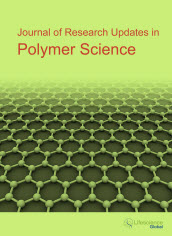jrups
Abstract : Featuring High Impact Polystyrene Composites Strengthened with Green Coconut Fiber Developed for Automotive Industry Application
|
|
Abstract: Studies focused on generating products able to reduce environmental impact have been put in place, and those aiming at finding polymeric composites strengthened with natural fibers stand out among them. A composite was strengthened with coconut fibers in the present study, since the generation of coconut residues has increased in Brazil due to coconut water industrialization. The aim of the present study is to process a high impact polystyrene (HIPS) composite strengthened with coconut fiber and to verify its possible application in the automotive industry. Strengthened samples were prepared using coconut fibers in the proportions 10, 20 and 30% fiber to develop such HIPS composite. Analyses were performed in order to set the density, Shore A hardness and impact resistance of the processed composites. It was found that the density and Shore A hardness results in the HIPS did not change due to the addition of coconut fibers. However, it was observed that the impact resistance was reduced because of it. It was noteworthy that the decreased impact resistance did not preclude the use of the HIPS/coconut fiber composite, since it showed that such material can be used in parts free from strong mechanical stress such as those inside the automobiles. The use of coir HIPS also aimed at reducing costs related to the polymer’s consumption and at reusing the waste (coconut husk) from coconut water industries. Keywords: Composites, characterizations, coconut fiber, HIPS, Shore A hardness. |
Abstract : Analysis of Stress Concentration Factor for Tensile Characteristics of Syntactic Foam Using Finite Element Method
|
|
Abstract: This paper presented the stress concentration factor (SCF) around the half circular edge of tensile specimens made of syntactic foam using finite element software Strand7 software. The study is a preliminary effort, which investigates the effect of variations of crack geometry on the stress concentration factor on a tensile specimen subjected to a constant, uniform, uniaxial tensile load. The material property is graded for varying Young’s Modulus and Poisson’s Ratio with different composition of glass microballoons. Finally, a uniform pressure is applied at the top and the model is constrained with symmetric boundary conditions at the left and bottom. As the result, these numerical results for both SCF experimental and simulation model are compared to those obtained from analytic fracture mechanics procedures and are found to be varied. In addition, the SCF is sensitive to the modulus of elasticity, particularly for lower composition weight percentage (wt.%), while it is also varied with the different weight percentage (wt.%) of glass microballoons, which is led by 2 wt.% specimen. Keywords: Finite element analysis, Syntactic foam, Stress, Concentration, Factor, glass microballoon, resin. |
Abstract : Computer Integrated Manufacturing of Polyurethane Foams Steered by Measured and Calculated Data in Comparison
|
|
Abstract: Polyurethane foams were manufactured under continuous measurements of isocyanate content, temperature, expansion and viscosity. Parallel model calculations were executed based on the driving force of 50kJ/mole heat of reaction of the energy rich isocyanate group and on thermodynamic balances of weight and heat of formation as well as on a kinetic model using a first order reaction for the isocyanate consumption and a relation for the viscosity dependent on conversion and on a viscosity constant. The agreement between continuous measured and calculated data was satisfying. The parameters isocyanate content, temperature, expansion and viscosity controlled and steered the variables of the production plant, like dosage of components, temperature and conveyer speed. The kinetic model was also valid for polyurethane foams with additives, which did not react with components of foam, like flame retardants or pigments. The thermodynamic balances of weight and heat predicted residues and consumed heats by degradation under fire, which correlated with those measured by TGA and DSC. The target was to establish computer integrated manufacturing without continuous measurements but by mere model calculation. This was possible with the knowledge of the first order velocity constant and the viscosity constant. Keywords: Thermodynamic, Kinetic, foaming model, flame retardants.Download Full Article |
Abstract : Formation Features of Hybrid Magnetic Materials Based on Polyphenoxazine and Magnetite Nanoparticles
|
|
Abstract: Hybrid metal-polymer nanocomposite materials based on polyphenoxazine (PPhOA) and Fe3O4 nanoparticles were obtained for the first time via two methods: in situ oxidative polymerization of phenoxazine (PhOA) in an aqueous solution of isopropyl alcohol with nanoparticles of Fe3O4 being present; chemical transformations of PPhOA subjected to IR heating at 400–450 °С in the presence of FeCl3·6H2O in an inert atmosphere. Obtained hybrid Fe3O4/PPhOA nanomaterials were characterized by means of Fourier transform infrared (FTIR) spectroscopy, X-ray diffraction (XRD), transmission electron microscopy(TEM), atomic absorption spectrometry (ААS), elemental analysis, differential scanning calorimetry (DSC), thermogravimetric analysis (TGA), as well as by vibrating sample magnetometry. The chemical structure, phase composition, magnetic and thermal properties of obtained nanocomposites were investigated in relation to the synthesis conditions. Keywords: Polyphenoxazine, Conjugated polymers, Oxidative polymerization in situ, IR heating, Metal-polymer nanocomposite, Magnetic material, Fe3O4 nanoparticles.Download Full Article |






















